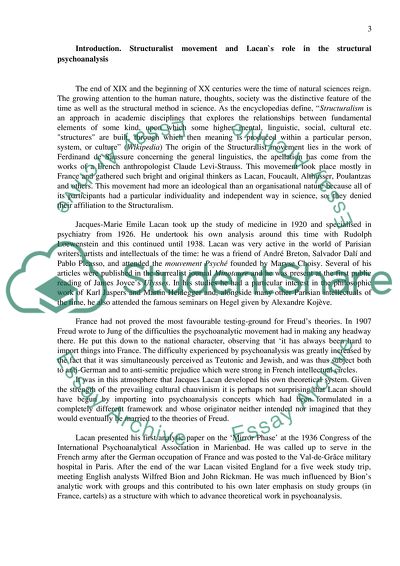Cite this document
(Structuralist Movement And Lacan`S Role In The Structural Essay - 1, n.d.)
Structuralist Movement And Lacan`S Role In The Structural Essay - 1. https://studentshare.org/psychology/1705088-application-of-jacques-lacans-theories
Structuralist Movement And Lacan`S Role In The Structural Essay - 1. https://studentshare.org/psychology/1705088-application-of-jacques-lacans-theories
(Structuralist Movement And Lacan`S Role In The Structural Essay - 1)
Structuralist Movement And Lacan`S Role In The Structural Essay - 1. https://studentshare.org/psychology/1705088-application-of-jacques-lacans-theories.
Structuralist Movement And Lacan`S Role In The Structural Essay - 1. https://studentshare.org/psychology/1705088-application-of-jacques-lacans-theories.
“Structuralist Movement And Lacan`S Role In The Structural Essay - 1”. https://studentshare.org/psychology/1705088-application-of-jacques-lacans-theories.


